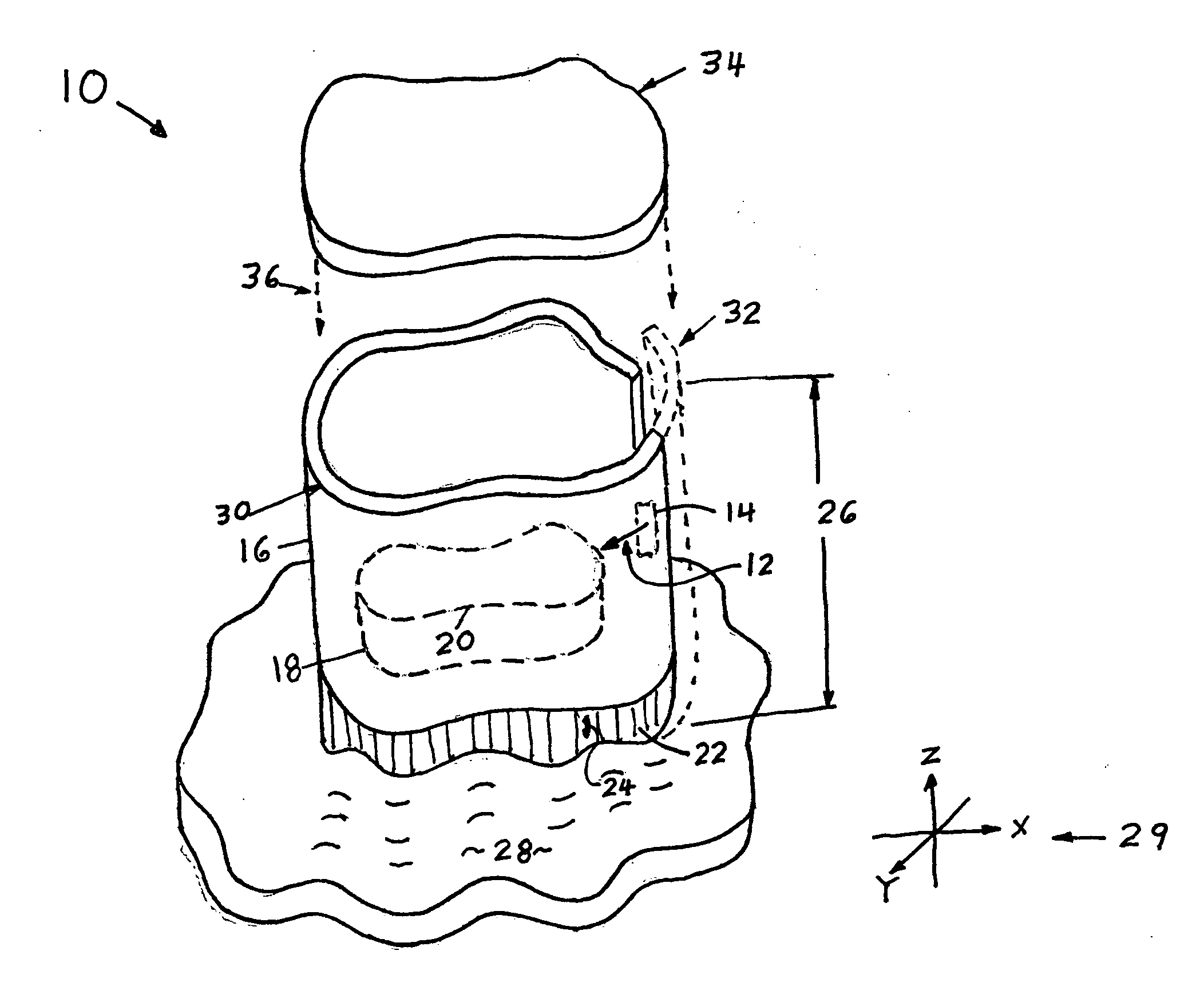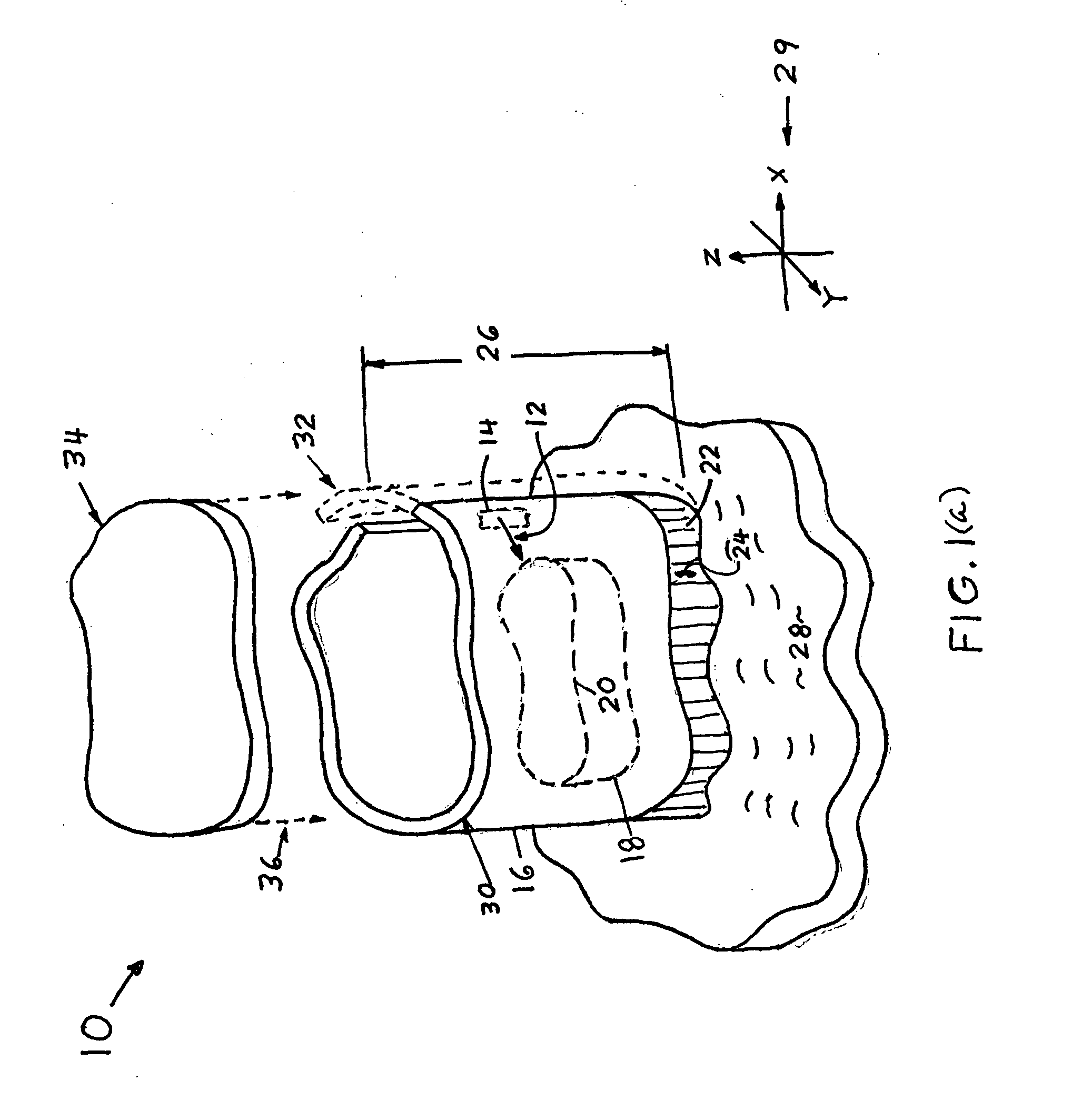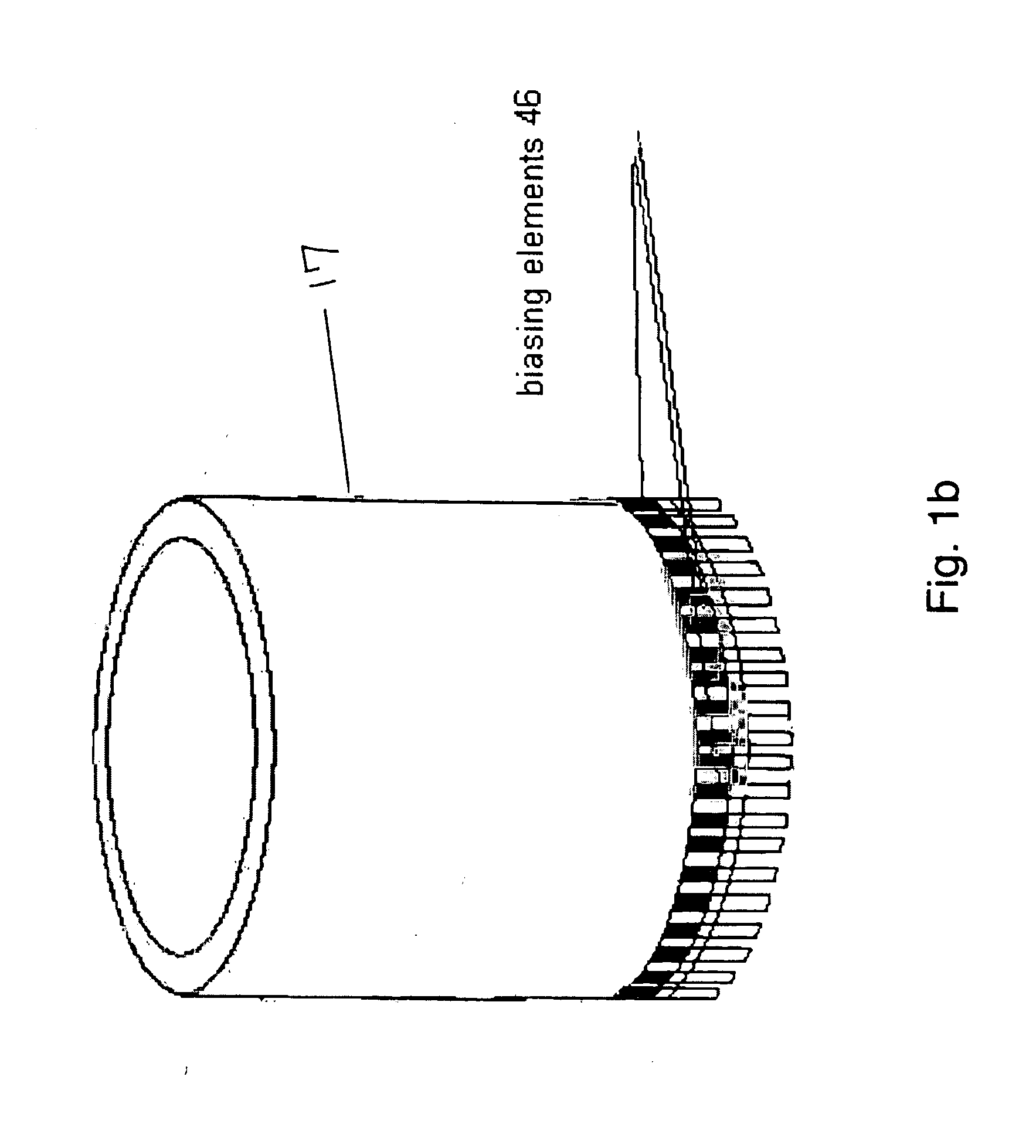Flexible laser safety curtain
- Summary
- Abstract
- Description
- Claims
- Application Information
AI Technical Summary
Problems solved by technology
Method used
Image
Examples
Embodiment Construction
[0029] An embodiment of the present invention is illustrated generally in FIG. 1(a). A flexible shield 10 is shown for blocking laser radiation 12 from a laser source 14. The shield 10 is configured with a flexible wall portion 16 allowing the shield 10 to be positioned near an object 18 which may have an irregular contour (such as 20) upon which the laser beam 12 is to be applied. The shield 10 also has a flexible edge portion 22, providing resilience in a direction 24 parallel to the wall portion 16 length 26. The resilient flexibility of edge portion 22 is for conformance with an irregular surface such as surface 28 upon which the shield 10 is positioned. The surface 28 may or may not be a part of an object 18.
[0030] For purposes of description of the flexibility of the shield, FIG. 1(a) shows an xyz coordinate system 29 for defining terminology to be used herein relating to shield orientation. Movement of the shield as shown in FIG. 1(a) in a z direction will be referred to as ...
PUM
| Property | Measurement | Unit |
|---|---|---|
| Flexibility | aaaaa | aaaaa |
Abstract
Description
Claims
Application Information
 Login to View More
Login to View More - R&D
- Intellectual Property
- Life Sciences
- Materials
- Tech Scout
- Unparalleled Data Quality
- Higher Quality Content
- 60% Fewer Hallucinations
Browse by: Latest US Patents, China's latest patents, Technical Efficacy Thesaurus, Application Domain, Technology Topic, Popular Technical Reports.
© 2025 PatSnap. All rights reserved.Legal|Privacy policy|Modern Slavery Act Transparency Statement|Sitemap|About US| Contact US: help@patsnap.com



